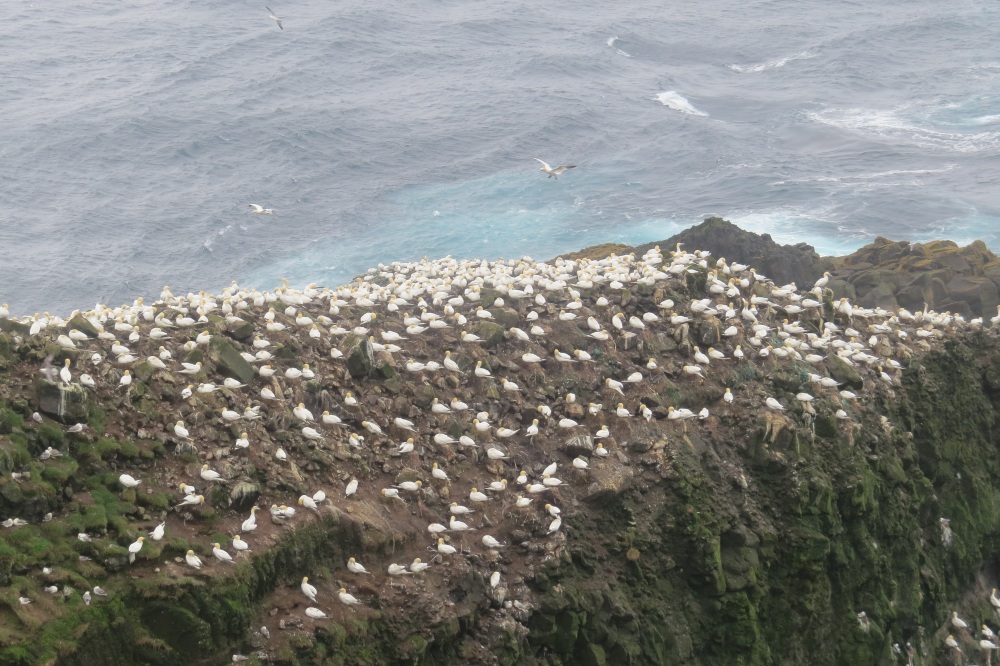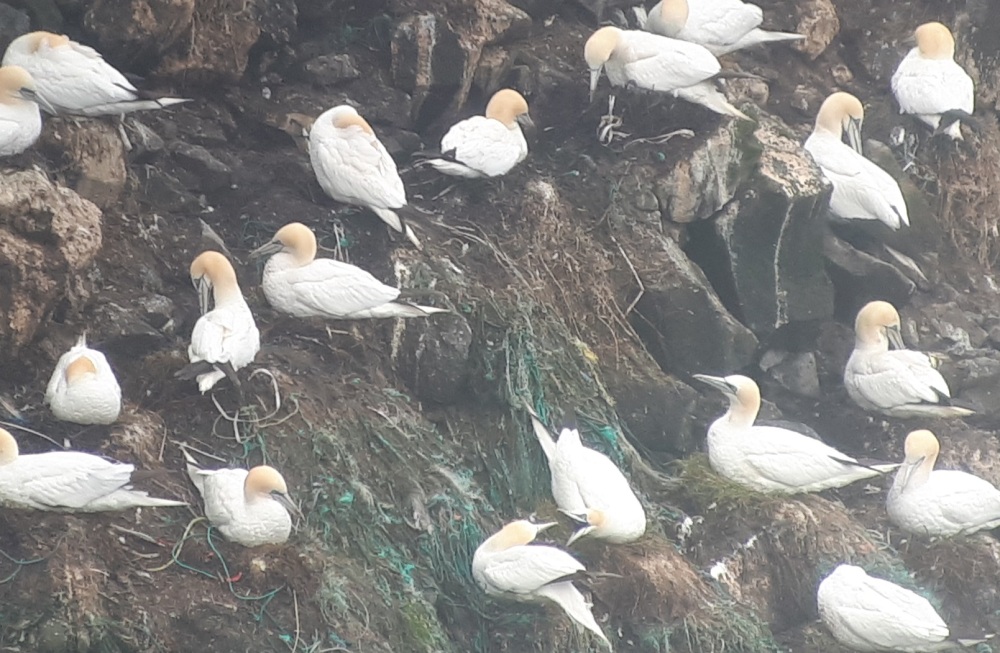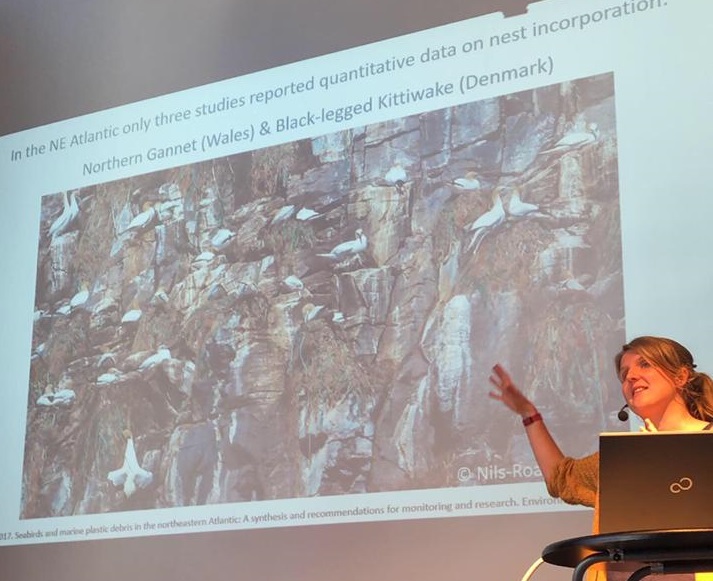
After reviewing what is currently know about seabirds and plastic in the northeast Atlantic, we found that despite lots of anecdotal evidence that seabirds incorporate debris into their nests, there is very little quantitative data on this issue. Therefore, last year I spent a couple of weeks visiting the Northern Gannet colonies of north Scotland to record the extent of nest incorporation of debris in their nests. We are currently combining this data with that collected by other seabird researchers and photographers across the gannet’s range. One colony that was missing was Mykineshólmur in the Faroes, so earlier this month I headed north to visit the only Faroese gannetry.
Similar to the Scottish weather I had left behind, the Faroes were wet and misty when I arrived. My first trip out to Mykines starting by not being able to see very much. Mykines is the westernmost island of the archipelago, a fast 45-minute ferry trip from Sørvágur. There were 100’s of Puffins whirling around as we approached, as well as plenty of Fulmars, Common Guillemots, and the occasional Gannet. Walking towards the islet of Mykineshólmur from the ferry, I could just make out the white shapes of Gannets but not their nests! So instead I concentrated on checking the nests of the many Black-legged Kittiwakes that breed around the island. By the time I got to the Gannets nesting on the stacks near the lighthouse the mist had cleared. Even though I knew the Gannet nests would contain plastic, I was surprised by the amount of debris, especially in the large pedestal nests. Virtually all the debris was threadlike-plastic – comprising of rope and packaging straps (the most I have seen in a colony) from fishing activities.

A few days later I had a second trip to Mykines, on a much brighter day, with Jóhannis Danielson, a seabird ecologist at the Faroese Marine Research Institute. On landing, we headed up above the village where the skuas and Arctic Terns nest. It was fantastic to see several pairs of Arctic Skuas, with the contrasting behaviour of individuals either dive bombing us or giving their broken-wing distraction display. Arctic Skuas and Terns have fairly basic nests, generally an indentation in the vegetation with little nesting material, if any, from the immediate vicinity of the nests. Therefore, it was not surprising that none of their nests contained debris. Although we did find a regurgitate (which we assume was from an Arctic Skua) that contained two fragments of plastic, one being a part of a bottle cap.
After lunch, we found a vantage point overlooking the Gannets nesting on the cliffs to the north of Mykineshólmur. Many of the Gannets along this section were out of view therefore Jóhannis used a UAV to take images of the hidden nests – increasing the sample size of nests we could check for debris, and providing us with the opportunity to compare a different method for monitoring Gannet nests for debris.
From the 418 gannet nests I checked with a telescope, 74% contained debris, with all nests containing threadlike-plastic. In contrast, only three of over 700 Black-legged Kittiwake nests contained debris (also thread-like plastic). Interestingly, several Kittiwake nests contained sheep wool, and there was a lot of sheep wool around the grassy areas of the island.
During my visit I had the opportunity to meet lots of ‘birdy’ people, especially through the Faroes Ornithological Society, thanks to Sjúrður Hammer (who I shared an office with in Glasgow during are PhDs and now works for the Environment Agency Faroe Islands). Sjúrður also organised for me to do a talk for the Faroes Ornithological Society, which was a fantastic opportunity to tell people about the project, and why I was there to collect information on debris in seabird nests. After my talk, Sjúrður discussed the problem of waders, especially Oystercatchers, getting sheep’s wool entangled around their legs. I have seen this in Scotland, including an Oystercatcher on Stroma that had so much wool around its legs it could hardly walk. The problem is such in the Faroes that they now ring Oystercatchers on the tibia. The images Sjúrður showed were pretty horrific with blackened or missing toes/feet.

Near the end of my trip, I tagged along with Sjúrður to the southernmost island, Suðuroy, where he gave a presentation on plastic research in the Faroes as part of a community environment week. The event was a fantastic mix of talks and live music!
Other fieldwork highlights were listening to so many Whimbrel calling overhead, and the amazing scenery! It really is a stunning place. I also came across a colour-ringed Whooper Swan that was ringed in Caerlaverock, Dumfries and Galloway in February this year!
A massive thank you to Sjúrður and Jóhannis for their knowledge and time during my visit!


Reblogged this on Wolf's Birding and Bonsai Blog.
LikeLike